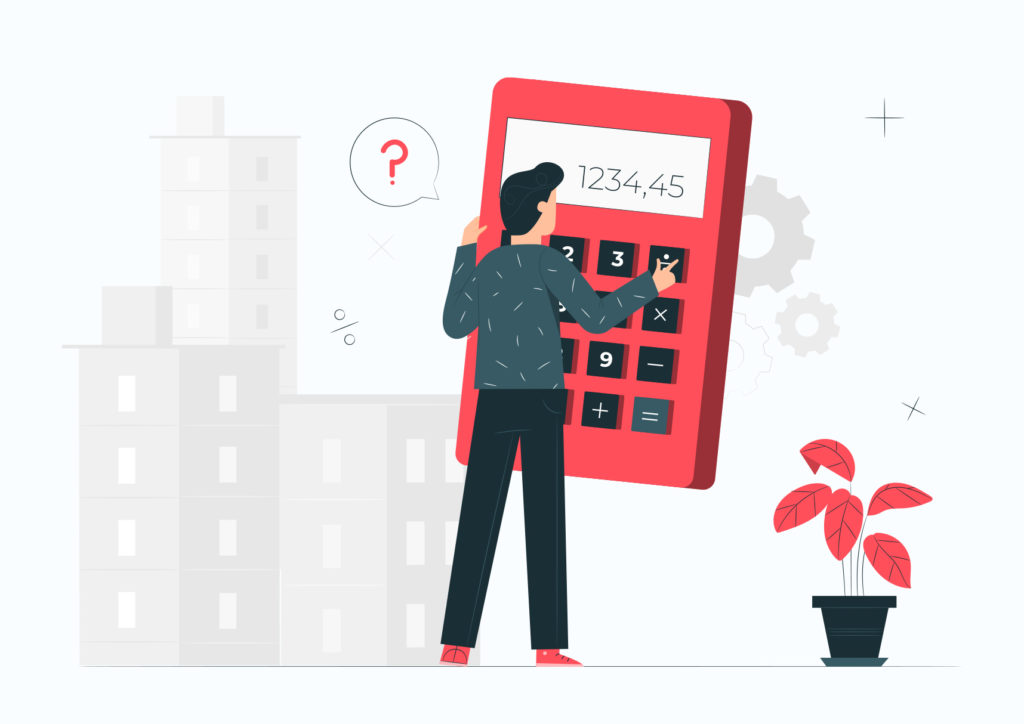Best Rental Yields in UK

In this article, we take a look at the basic principles of rental yield, what makes a good rental yield and the best rental yields in the UK.
Rental yield is an important factor for any investor looking into property. Ensuring that your buy-to-let property will deliver a decent rental yield will help to cover outgoings and allow you to make a profit on your investment.
What is Rental Yield?
Most properties will deliver two streams of income for buy-to-let investors. The first is capital gains, the increase in a property’s value when sold. The second is rental yield, the amount you can expect to earn by renting the property out to tenants.
The rental yield can also be used to compare different properties to determine which one offers the best return on investment. Properties with higher rental yields may have lower capital gains potential but still offer a good return in terms of income. On the other hand, properties with lower rental yields may have higher capital gains potential but generate less income from renting. Ultimately, investors must decide which type of return is more important to them when making an investment decision.
It is important to note that rental yields can vary significantly depending on the location and condition of the property, as well as other factors such as the availability of tenants. Therefore, it is essential to do your research and compare different properties before making an investment decision.
Why is Rental Yield Important?
Most buy-to-let investors will be looking to use the monthly rental income from their property to cover its cost. Expenditures can include things like mortgage repayments, property maintenance, taxes, property management fees and other associated costs that come with owning a property. Ensuring these costs are covered by rent makes the property sustainable and is one of the key aspects of building a solid investment.
It’s important to factor in the potential for periods of vacancy when calculating the rental income. It is wise to build a cushion into your calculations to cover any unexpected costs or vacancies. Being aware of potential issues and having an emergency fund can help you handle any problems that may arise. Furthermore, it’s important to make sure you are adequately insured, as this can provide peace of mind and protect your investment in the event of damage or loss.
Additionally, it is important to consider the local rental market and make sure that the rent you charge is competitive with other similar properties in the area. Doing so will help to ensure that your property remains occupied and you are able to generate a healthy return on your investment.
How to Work out Property Yield?
Before buying rental property, you’ll need to calculate your property’s rental yield. Take the rental income that the property will generate in a year and divide it by the price of the property before multiplying by 100 to get a percentage. For example, a rental property bought for £400,000 and bringing an annual rental income of £20,000 would deliver a 5% yield.
The above calculation will give you the gross rental yield, but ideally you’ll want to calculate the net figure to get an accurate overview of your investment. When calculating the net rental yield, you take off expenses like maintenance of the property, tax, insurance, mortgage costs and other fees, which will give you a much clearer picture of the actual yield.
A good net rental yield should be between 5-7%, which will ensure you are still making a decent return on your property after the usual outgoing payments.
How do you Increase Rental Yield?
To maximise their rental yield, investors will be looking to buy a rentable property for as low as possible. Another way to boost rental yield is to help your property stand out in the rental market with sought-after features such as a modern kitchen and bathroom, or investing in a property with outdoor space or spare rooms that can be converted into a home office.
Landlords may also look to target different rental demographics to increase rental yields. For example, student property tends to deliver much higher rental yields than residential properties – sometimes up to 20% higher! You can read more about the benefits of investing in student property here.

What is a Good Rental Yield?
In the UK market, the general consensus is that a good rental yield is between 5 – 8%. A good yield will cover the necessary expenses of maintaining a property and at the same time give you reasonable returns. If rent fails to cover expenses you may have to dip into contingency funds, which is unlikely to help you turn a profit.
Savvy investors look for more affordable properties where there is set to be good demand. In emerging locations, for example, cities undergoing redevelopment, buy-to-let investors are likely able to command higher rents over time which can boost a property’s yield.
It’s important to note that rental yields fluctuate widely from city to city across the UK. For example, properties in London may only deliver yields of 3%, but that doesn’t mean investing in a London property is a bad decision. It’s still possible to generate returns with a low rental yield.
UK Rental Yield Projections 2023
Based on Hamptons’ data, there was a 6% increase in rents in 2022, and this growth is expected to continue at 5% in 2023 and 4% in 2024. Currently, the North has an average rental yield of 7.4%, which is 2.2% higher than the South’s average yield of 5.2%.
The increasing cost of living has resulted in potential price hikes for buy-to-let landlords in 2023. This may impact rental yields as various expenses such as labour and building materials could reduce profits across the country. The ideal rental yield in 2023 is subjective and depends on personal profit preferences. While some may be content with an 8% yield, others may be satisfied with 4%. It is important to note that the Northern regions of the UK offer the highest rental yields, so investing in a Northern rental area may result in the best returns.
Overall, it is important for landlords to carefully consider their investment options and assess which area offers the best return on their investment.

Where are the Best Rental Yields in UK?
Looking at the UK generally, the highest rental yields are currently found in the North-West region. This northern trend has been triggered by an exodus from London, in search of property prices that are more affordable. A number of regeneration projects are increasing the livability and appeal of these cities. In contrast, London offers below-average yields. Especially due to the high property prices when compared to the rest of the UK.
Looking regionally can give you a good indication of where a good investment property can be found. Generally, cities are going to offer the best yields. City centre properties are always popular due to close proximity to amenities and good transport links.
Here are some high-performing UK cities in terms of rental yields. These are also the best places to buy an investment property:
Birmingham
Growing in popularity thanks to an influx of investment that is attracting residents and businesses, the UK’s second city offers landlords decent yields. Certain areas are hitting 6% yields, particularly because property is less expensive than other areas. With its increasing popularity and the amenities and opportunities available, rental prices in Birmingham are on the rise, which is giving yields a boost too.
Liverpool
With some of the UK’s highest yields available, some areas, including L1 in the city centre can offer yields of 10% and up. There are five more Liverpool postcodes that rank in the top 25 UK areas for return on yields. Some of them are L11, which delivers yields of 7-8%. L15 has average asking prices of £170,150 and average monthly rent of £971 per month, resulting in yields of 6.9%.
Leeds
Leeds offers plenty of opportunities for investors to generate decent yields and diversify their property portfolio. Offering a range of modern apartments and traditional homes. As well as a diverse cross-section of renters, from students to young professionals to families
In the LS4 area, the average asking price of property is £203,493 and average monthly rent around £1,364. Meaning, it delivers impressive yields of 8%. LS2 also delivers an average yield of 8% with the right property.
FAQs
What is a good ROI on rental property?
ROI can change drastically depending on the investment. Generally speaking, returns of around 5% are considered highly attractive, stable returns. It’s good to keep in mind that a property is still likely to deliver capital appreciation too.
The most important thing is that ROI is positive and that the property is allowing you to make money. The amount considered “good” will vary from investor to investor. Those looking to long-term profits may be satisfied with lower ROI in the short-term. Others will be looking to ensure the rent covers costs like a buy-to-let mortgage to have it paid off for retirement.
It’s always important to remember that returns can be affected by factors such as location, maintenance costs, and local market trends. Keeping a close eye on these is essential for any investor looking to get the highest ROI possible. Additionally, it’s important to have an experienced team on hand who can help you make the best decisions when it comes to investment property. They can offer advice on the best markets and locations that will provide the highest ROI.
Where is the highest rental demand in the UK?
The UK’s cities continue to see rental demand boom! Cities like London, Birmingham, Edinburgh, Manchester and Leeds are seeing growth at impressive levels. While demand is high, the northern cities in particular remain quite affordable in terms of house prices. With the UK property prices currently at record levels, more people are renting for longer. They want to save up for a deposit, which means the high rental demand is likely to stay.
When it comes to investing in property, rental yield is an important factor for buy-to-let-investors. You’ll want to be sure that you’re getting the best rental yield possible. Ones that will cover all the associated costs of owning a property. Landlords should be sure they know how to calculate the rental yield. Also, have an understanding of the difference between gross and net initial yield. When it comes to finding a property that will deliver good yields, the UK’s northern cities are currently offering bright prospects. To find out more about the best rental yields in the UK, get in touch with our team.


